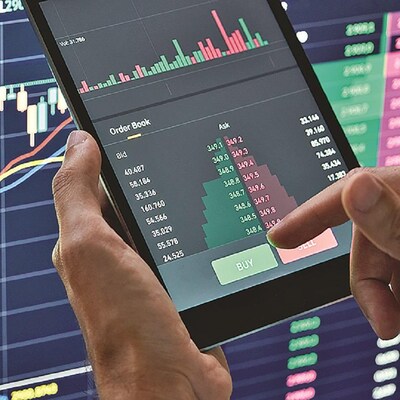)
The absence of a physical representation of money might be why people spend more with digital payments. Photo: Shutterstock
Before stepping out of a restaurant, have you found yourself tipping servers less often since the rise of digital payments? Are you also donating less to the needy around you? Interestingly, while these habits may have changed, you might be spending more on things you could have done without.
An online survey by Business Standard revealed that people are tipping significantly less today than they did a few years ago, while their overall spending has increased.
Key findings from the BS Poll
— Of the 2,300 respondents, 84.4% admitted to spending more, while 15.6% said they were not.
)
Business Standard‘s survey aligns with a recent study conducted by the University of Melbourne and University of Adelaide. This study analysed 71 research papers covering the spending habits of 17 countries and was published in the Journal of Retailing.
The research found that people tend to be less strict with their budgets when using cashless payment methods, such as tapping a phone or card, compared to using cash.
“Our meta-analysis indicates that providing consumers with the options to use cashless payment methods instead of cash increases their spending behaviour, offering opportunities and challenges for both retailers and public policymakers,” the researchers said.
Lachlan Schomburgk, a PhD student at the University of Adelaide who led the study, highlighted a positive “cashless effect,” where consumers spend more using cashless payment methods compared to cash. However, this effect did not extend to tipping or donating.
)
Why does this happen?
The absence of a physical representation of money might be why people spend more with digital payments. When using cash, people physically count and hand over notes and coins, making the act of spending more tangible and easier to track.
Digital payments boom in India
Indians now make a staggering 10-12 billion cashless payments monthly. External Affairs Minister S. Jaishankar noted in May, “The life of every Indian citizen has become easier because we have embraced technology in a very deep way. Today, we do as many cashless payments in India in a month as America does in three years.”
A report by Amazon Pay India and Kearney India reveals that nearly 90% of Indian consumers with internet access prefer digital payment options for online purchases. The survey spanned 120 cities, 6,000 consumers, and over 1,000 merchants across India and was conducted in the first quarter of 2024.
Demographics and digital payment adoption
India’s millennials (aged 25-43 years) and Gen X (aged 44–59 years) are leading the adoption of digital payments. Boomers are also embracing digital wallets and cards at higher rates. Both men and women use digital payments in about 72% of their transactions, indicating gender parity.
— UPI is the most preferred method, with 53% of consumers using it for online purchases.
— Digital wallets and cards are preferred by 30%.
— Cash remains predominant for offline purchases, with 25% of consumers opting for UPI and 20% for digital wallets and cards.
Emerging modes like Buy Now Pay Later (BNPL) are gaining visibility, with 87% awareness among respondents.
Cities like Ahmedabad, Pune, Indore, Jaipur, Lucknow, Patna, Bhopal, and Bhubaneswar show digital payment adoption comparable to larger metros despite their relatively lower retail potential.
Common digital payment methods in India
Popular digital payment options in India include UPI wallets such as GPay and PhonePe, internet banking services, debit/credit cards, and Aadhaar Enabled Payment Systems (AEPS).
As digital payments continue to grow, it’s essential to be aware of their impact on spending habits and manage them wisely.
The dark side: Rise of online payment frauds
Along with the ease of transactions comes the rise of online payment frauds. Payment frauds on UPI jumped from 195,000 in the 2021 financial year to 725,000 in FY2023, with losses increasing from Rs 1.1 billion to Rs 5.75 billion during the same period.
According to RBI data, cheap access to the internet and greater financial inclusion have contributed to the increase in digital payments across the country. A June survey on LocalCircles.com, a community-based social media platform, found that 47% of urban Indian households experienced one or more financial frauds in the last three years. Among them, 43% were victims of credit card fraud, while 30% experienced fraud via UPI transactions.
However, these figures only account for reported frauds, with many more going unreported as users remain unfamiliar with the institutional setup in place to lodge such reports.
As digital payments continue to grow, it’s essential to be aware of their impact on spending habits and manage them wisely while staying vigilant against fraud.
First Published: Jul 12 2024 | 2:02 PM IST







